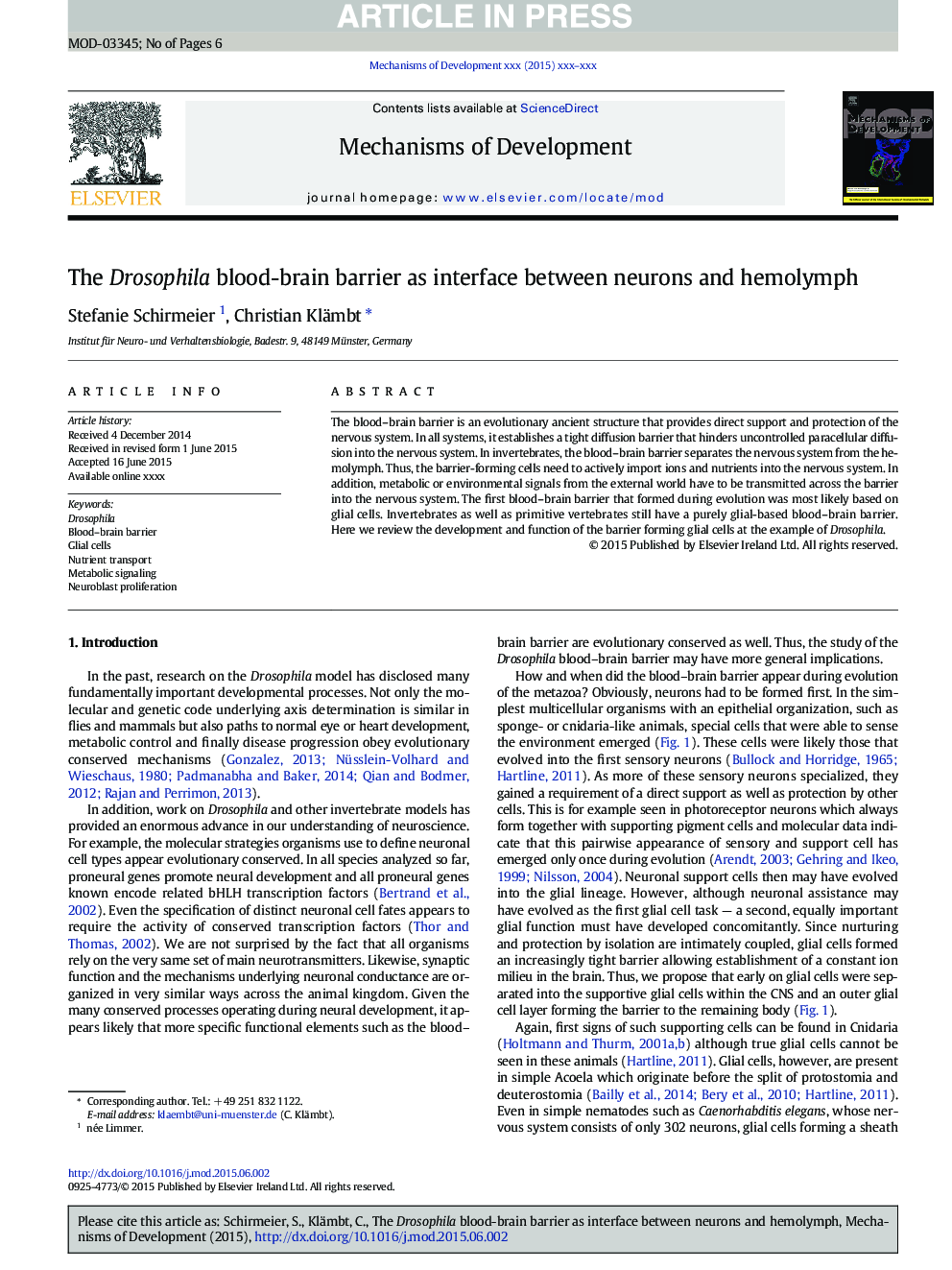| Article ID | Journal | Published Year | Pages | File Type |
|---|---|---|---|---|
| 8476013 | Mechanisms of Development | 2015 | 6 Pages |
Abstract
The blood-brain barrier is an evolutionary ancient structure that provides direct support and protection of the nervous system. In all systems, it establishes a tight diffusion barrier that hinders uncontrolled paracellular diffusion into the nervous system. In invertebrates, the blood-brain barrier separates the nervous system from the hemolymph. Thus, the barrier-forming cells need to actively import ions and nutrients into the nervous system. In addition, metabolic or environmental signals from the external world have to be transmitted across the barrier into the nervous system. The first blood-brain barrier that formed during evolution was most likely based on glial cells. Invertebrates as well as primitive vertebrates still have a purely glial-based blood-brain barrier. Here we review the development and function of the barrier forming glial cells at the example of Drosophila.
Related Topics
Life Sciences
Biochemistry, Genetics and Molecular Biology
Cell Biology
Authors
Stefanie Schirmeier, Christian Klämbt,
